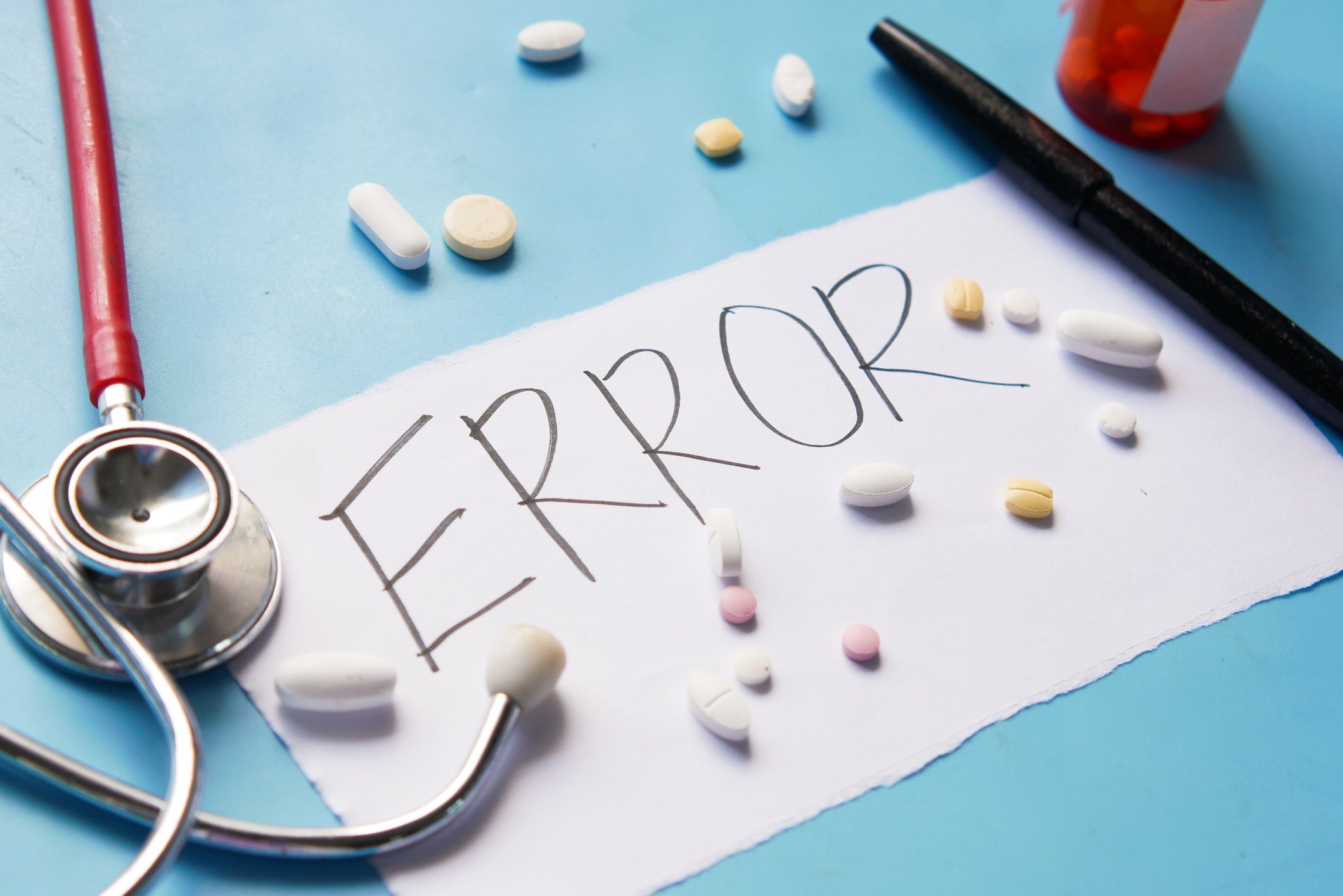Sony BUSINESS PROBLEMS AND DECISION MAKING
| Sony |
| BUSINESS PROBLEMS AND DECISION MAKING |
| 12/6/2015 |
| In this paper we will discuss in detail about the analysis and problem solving approach of Sony. |
Umer Arif
MIS 535
Prof. Najib Kalai
TABLE OF CONTENTS
ABSTRACT ……………………………………………… 3
INTRODUCTION ……………………………………… 4
COMPANY BACKGROUND ……………………… 5
PROBLEMS FACED BY SONY ………………………. 6-7
PROBLEM SOLVING PROCESS ……………………… 8-10
APPROACHES USED BY SONY ……………………… 10
TOOLS USED BY SONY ……………………………… 11
SOLUTIONS TAKEN BY SONY ……………………… 12-13
SWOT ANALYSIS OF PDCA ……………………… 14
CONCLUSION ………………………………………. 15
REFERENCES ………………………………………. 16
ABSTRACT
Decision making and problem solving are important skills for any business. Sony is a leading company in innovation but they gradually lost their superiority in the new competitive world of innovation and the presence of new technology to solve business problems.
In this report, we discuss the current procedures adopted to analyze and solve the problem and also the tools used by Sony to get these problems solved. We also identify the best solutions and new opportunities which helps Sony to become a leader again.
In this report, I would like to perform SWOT (Strength, Weakness, Opportunities and Threats) analysis on the existing model (Plan-Do-Check-Act Cycle- PDCA Cycle) of Sony. I will compare the existing model with other available models in the market and suggest the recommendations to the company by findings and comparative results.
Finally, I will implement the best strategy adopted by Sony to solve their problems in the future.
INTRODUCTION
Sony lost its magic formula from last decades. Company lost it high position in the market. By seeing continuous downfall in the sales of Sony, the management finds the solution to this problem and plans to reorganize the company “ONE SONY” to prioritize the business. But this solution didn’t help the company at all. The downfall in the sales continues and Sony lost its position in the World market day by day.
From last several months, Sony is facing an expected loss of $640 million in financial year 2011 (Jeff Blagdon, 2012) due to increase in tax charges and restructuring costs. Sony also incurs a loss of $312 million in Q1 of financial year 2012 (Daniel Copper, 2012). Sony is continuously losing money and its position in the market and don’t have any chance for its growth in recent years due to its problem solving strategies.
A reputed business magazine reports that the shares of Sony is at its lowest price in 31 years of period and incur a net loss of 456.7bn yen at the end of March, 2012 (NEWS Business, 2012). Sony’s movies, music and financial proves to be profitable in the quarter but regular loss from television, personal computers and mobile phones bring the company to its bottom line.
SONY COMPANY PROFILE
Sony is a Japanese multinational corporation established in 1946 and headquarter is located in Tokyo, Japan. Sony is the leading manufacturer in the field of consumer electronics such as refrigerator, television, mobile phones etc. In the list of Fortune Global 500, its rank was 87th in 2012 (CNN Money, 2012). Sony is an international company which is engaged in the development, design, manufacture and sale if various consumer electronic products (The New York Times, 2012). Sony also contact third party manufactures for information technology products. Sony’s sales team and management work hard to sales its products globally through subsidiaries, retailers, distributors and office websites. Sony is also engaged in entertainment industry including Pictures, Music. Sony is also engaged in financial services such as banking and credit financing. Sony is also engaged in network services and advertisement business.
PROBLEMS FACED BY SONY
Sony is facing many problems but there are two main reasons which lead to the decline in Sony. These reasons are:
Lack of Innovation
The major quality of Sony is its development of innovation. Sony has the ability to develop new products according to the consumers need. They understand the hidden needs of the consumer well and try to develop new innovative products to fulfill their needs. The development of Walkman made him leader in the field of portable music players but they didn’t continue with this product and never upgrade it to sustain its initial success (Surowiecki’s, 2011). When Apple iPad is launched in the market, they prove to be a big challenge for the innovative ideas of Sony (Business@GW, 2012). Sony is continuously losing its consumer oriented innovative ideas which directly harms the reputation of Sony (Hirai, 2012).
Lack of Core Competence
Another reason behind Sony’s fall is that Sony ignored the improvement in its core business of developing innovative ideas. They stuck into their new multiple businesses of financial services, music label, online music store, advertisement agency, movies and games. Sony is lacking behind in product positioning and branding due to lack of focuses and core competence (Byford, 2012).
Objectives
Sony identifies these two problems as the vital business problems. Once Sony lacks in innovation, it also lose core competency. With the help of problem solving and decision making skills, we can identify the root cause of the problems and find best solutions to overcome from these problems. The best solutions and theory helps Sony to gain competitive advantage over their rivals.
With the help of problems which we have studied for Sony, we will discuss how to solve critical business problems by adopting proper strategies and how to implement these overall strategies to achieve the goal. This problem solving process include theories, analysis of situations with the help of real life management problems, help us in understanding decision making skills and strategies and finally teach us how to solve real life problems in future.
Overview of the Problem Solving and Decision Making
Problem Solving and decision making are important skills for any organization to survive in today’s competitive world (Shibata, 1997). Problem Solving is a methodology in which we proceed step by step to analyze a situation and then develop and implement available solutions of the problem (Kendra, 1997). Decision making is nothing but taking right decision at every step of problem solving process (Adair, 2010). The quality of decision making supports problem solving process in order to get better results for business strategies (Greg, 2009).
PROBLEM SOLVING PROCESS IN SONY
Consumers need and requirements are changing everyday as electronic market is developing and reach to its new heights. Sony has to take immediate steps to reinforce its competitive advantages (Mariko, 2012). The major issue which should be resolved by Sony is to make their products more appealing to current consumers (Shunichi, 2012). With reference to business, problem solving approach begins with the analysis of problem and ends with the solution with the help of which organization gains profit (Ozasa, 2000).
Sony use a five step integrated problem solving and decision making process (Saeromi, 2012). Sony deals with this process of problem solving and decision making together to achieve the best solutions for the business problems in order to get effective and quick solutions (Yau, 2011). The table below describes all the five steps in brief and then we will discuss all the steps in detail and how Sony applies them to the problems.
Table 1: Problem Solving Process in Sony
| STEP | PROBLEM SOLVING | STAGE | DECISION MAKING |
| 1 | Identify the problem | 1 | Frame the decision. |
| 2 | Explore alternatives | 2 | Innovate to address needs and identify alternatives. |
| 3 | Select an alternative | 3 | Decide and commit to act. |
| 4 | Implement the solution | 4 | Manage consequences. |
| 5 | Evaluate the solution | 4 & 1 | Manage consequences and frame the related decision. |
Step 1: Begin with a Problem and treat it as a challenge
All business has problems. Problem solving process starts with the analyses of problem and then to treat these problems as a challenge. The major problem of Sony is in the reduction of sales of products. For this, Sony is trying to collect all the information related to its products, services and market. Once the major problems are identified, Sony will consider these problems into the challenges.
Step 2: Explore Alternatives
The second step is to explore alternative solutions to the problem identified in Step 1. In this step we generate alternative solutions and then evaluate the alternatives. After Sony will generate all the alternatives for the problem then they will make criteria to prioritize the solutions. To generate alternative solutions Sony may adopt some approaches like group discussions and market surveys.
Step 3: Select an alternative
In this step, we have to select the best solution to implement. After evaluating all the alternatives, the best solution which is closest to the problem will be evaluated properly. Sony will have to make proper check to identify all the results by implementing the solution. This step is a critical step in problem solving process as one wrong decision may lead to entire failure of system.
Step 4: Implement the solution
Sony is now ready to implement the plan entirely. In this Sony will have to implement the solutions with five parts: develop a basic plan, determine objectives, identify the resources required, and build a plan and finally implement the plan.
Step 5: Evaluate the situation
The last but the major step is evaluating all the situations after implementing the process. In this we have to monitor the ongoing process with the decision making process to achieve the goal of organization.
APPROACHES USED BY SONY
CPS approach is used by Sony to adopt changes made inside the organization. Sony recognizes that its own employees have innovative ideas but the only need is to put these ideas at right place and also have to motivate them to share those ideas. In this approach, Sony develops a team of personnel to participate in the change process and share their ideas. This process brings all employees, employers and even consumers. Sony use CPS approach to encourage consumers to participate in the survey which helps in innovating new ideas rather than to rely on traditional ideas of problem solving.
The major characteristic of this approach is that it converts the problems into opportunities and help Sony in the development of their business. With the help of this approach Sony not only able to generate new innovative ideas but also gain competitive advantage over its competitors. It helps Sony to re-define the problems they are facing, change these problems into challenges with new innovative ideas and then take appropriate actions to achieve the goals.
Sony consider CPS approach as an innovator and try to resolve each and every problem to gain competitive advantage with new innovative ideas and develop new and latest products by keeping the consumer needs in mind and become a leader in its market again.
TOOLS USED BY SONY
PDCA Cycle (Plan-Do-Check-Act) is a four step never ending tool used by Sony for continuous improvement (Walter Shewhart, 1986). This cycle is just like a circle which is repeated again and again for continuous improvement. PDCA tool helps Sony to control and continuous improvement of products and market (Golum, 2010). PDCA cycle helps Sony to answer some major questions in problem solving and decision making process. The table below explains it.
Table 2: Objective of PDCA cycle at each stage by Sony
| PLAN | |
| Identify the problems – what | Analyze the problem and identify the future business opportunities of Sony. Set SMART (Specific, Measureable, Agreed, Realistic and Timeframe) Goals. |
| Analyze the problems – why | Analyze the root cause of the problem so that we get best solution for the problem. We have to gather data from the personnel in this step. |
| Develop solutions | Find more than one potential solution for the problem and also make plan to chose and implement the best solution from all the alternatives. |
| DO | |
| Implement Solutions | Sony will immediately and cost effectively implements the best solution to solve the problem and collect and record the results for further improvement. |
| CHECK | |
| Evaluate and study results | Sony will check all the desired results of the new solution and if Sony will found any undesirability in the solution, they will return to plan phase to find another best solution by analyzing the problem again. |
| ACT | |
| Implement the full scale solutions | Sony will now fully implement the new solution with all the changes necessary to adopt this solution, provide proper training and also look for future opportunities. |
SOLUTION TAKEN BY SONY AND ALTERNATIVES
Innovation Oriented Solution
Innovating new ideas and technology was the key of success for Sony which is lost from several years. In order to reinforce its capabilities in the field of innovation, Shoji Nemoto (head of innovation technology) and Tomoyuki Suzuki (image senior Vice President) take a serious lead towards it and guide individuals of Sony to develop new technologies and ideas with their great experience in the field of R&D and technical knowledge (Ellen, 2012). Sony also lead by Kunimasa Suzuki (head of products and services innovation strategy) to provide efficient technological ideas for the existing product line (Rosen, 2012). Sony is now working in order to generate new innovative ideas and also acquire next generation innovative technology. The important departments like R&D, design and marketing consumer centric to develop new ideas and technologies which helps the company to re design all the products and regain the image of the products.
Sony is now working with long term strategies and growing ever faster in the field of developing new ideas and technologies. They are now capable of developing true values to its products so that the products will be closer to the consumers and will be liked by them. The major success and growing field of Sony is its new developing business in the field of medical. They start developing printers, monitors, cameras and other useful equipments in the field of medical. Till yet its medical business line is not a separate unit but scattered at various business lines but now they decide to make a different and separate medical business group under the leadership of Executive Deputy President Hiroshi Yoshioko (Sony Annual Report, 2012).
Brand Focus and Core Competence Oriented Solutions
After studying the need of the market and consumers, Sony wants to focus on three major areas of developing digital imaging, game and mobile business. They now adopt new technologies and features to make proper research for these products and wants to make investment in these areas to move forward. Sony decided to dedicate about 70% of its total R&D budget to these three areas only (Sony Group, 2012). Sony wants to regain its brand leadership by strengthening its brand focus.
Sony is also focusing in television business for which they are reducing their operational cost. They already make cost reduction in the manufacturing of LCD panel by reducing models in the year 2012 as compared to the year 2011. Sony also wants to make reduction in fixed business costs to up to 60% and also 30% reduction in operating costs (Sony Annual Report, 2012).
The alternative solution is the restructuring of organizational structure and operational units and also has to take necessary steps about the business units which are of no use to gain efficiency and enhancement in managerial and operational efficiency (Minato-ku, 2012).
Impact of these solutions
After implementing these solutions, the business from consumer electronics rises about 70% of overall sales and 80% of operating income came from this business unit at the end of year 2014 (Sony Annual Report, 2012). Sony also target total sales of digital imaging business unit of about 1.5 trillion yen and a double digit. Sony also focuses on game business and mobile business and target sales of one trillion yen and 1.8 trillion yen respectively with a profitability of 8%.
SWOT ANALYSIS OF PDCA CYCLE USED BY SONY
| Strengths
· With the help of this approach, Sony was able to identify the problem clearly with all the possible risks, able to find best solutions and then implement the solutions for the evaluation of business changes. · PDCA cycle is an effective tool with the help of which Sony will able to use its resources optimally and get best results. · Possibility of errors is reduced to its minimal after the completion of whole PDCA cycle. · Sony will able to take corrective measures and can change the solution if the solution chosen by them not suited the organization fully. · This will also save time of Sony while solving any problem in future also. |
| Weakness
· PDCA cycle is a simple method which does not reflect some activities such as leadership, training and communication and other major skills. · PDCA cycle works only for short term strategies and improvements instead working for long term strategies and improvements. · Change is implemented in the organization, individual have no right to complain for it and resist it. |
| Opportunities
· The “plan” step help Sony to think and make plans for future whereas “check” step helps Sony to identify whether the solution is able to achieve the goals or not. · PDCA cycle is a never ending process which continuously finds errors and corrects them at early stages only. · PDCA cycle help Sony to optimum utilization of its resources which make problem solving and decision making process simple and faster. · PDCA cycle is a continuous process which helps Sony to reduce the chance of mistakes. |
| Threats
· Ignores the individual in an organization. · A major threat of PDCA cycle is its reactive nature which is far behind from the proactive approach of new methodologies and technologies. · PDCA cycle is a continuous improvement process and requires continuous changes which lead Sony in a continuous state of instability. · PDCA cycle may lead to uncertain environment which also lead to confusing and fatigue environment among the individuals. |
CONCLUSION
Problem solving and decision making skills are important for the success of any individual or organization. The proper implementation of solution is required to make it a success. It is not an easy task but proper use of available technologies, methodologies, models and tools to support this process will lead to produce effective solutions. Effective problem solving and decision making approach requires careful identification, analysis, evaluation and step-by-step planning. It proved to be advantage if implemented in an effective manner and also a disadvantage for the business.
REFERENCES
Hirai (2012) Sony Accelerates Transformation to Drive Innovation and Growth. Available at: http://www.sony.net/SonyInfo/News/Press/200911/09-133E/index.html (January 24, 2013).
Kendra (1997). One Greater Lesson From Steve Jobs: Innovation Begins as A Social Movement. Available at: http://www.fastcodesign.com/1665211/steve-jobsembodied-the-entrepreneurial-capitalism-we-alllove (February 13, 2013).
Mariko (2012). An Overview of the General Theory of Innovation. Available at: http://www.trizjournal.com/archives/2008/04/06/ (February 15, 2013).
Minato-Ku (2012). Classic Brand Failures: Sony Betamax. Available at: http://brandfailures.blogspot.sg/2006/10/calssic-brand-failures-sony-betamax.html (February 15, 2013).
NEWS Business (2012). Sony Shares Tumble to 31-Year Low Amid Record Losses. Available at: http://www.bbc.co.uk/news/business-18030939 (February 20, 2013).
Ozasa (2000). Mapping the Problem Solving Process.Available at: http://www.studygs.net/problem/problemsolvingo. htm (February 20, 2013).
Problem Solving Process in Sony (2012).Available at: http://www.sony.net/SonyInfo/News/Press/index.html (February 20, 2013).
Rosen (2012). Creative Problem Solving Leads to Organizational Innovation. Available at:
http://www.projectsmart.co.uk/creative-problemsolving-leads-to-organisational-innovation.html
(February 21, 2013).
Shewhart, W. (1986). Innovation Process. Available at:http://www.jpb.com/creative/innovationprocess.php (March 4, 2013).
Shibata, H. (1997) Sony Says Professional Products to Help Consumer Unit. Available at:
http://www.bloomberg.com/news/2012-04-05/sonysays-professional- products-to-help-consumerunit.html (January 24, 2013).
Shunichi (2012). Overview of the Problem Definition Process. Available at: http://www.processinnovation.ca/problem/problemsolve.html (February 21, 2013).
Sony Annual Report (2012). Available at: http://www.sony.net/SonyInfo/IR/financial/ar/2012/
index.html (February 22, 2013).
Sony Group (2012). Decision-Making-Solution. Available at: http://www.decision-making-solutions.com/decision_making_model.html (February 22, 2013).
Surowiecki’s, J. (2011). Sony R & D Mission. Available at: http://www.sony.net/SonyInfo/technology/rd/index.html (February 7, 2013).









